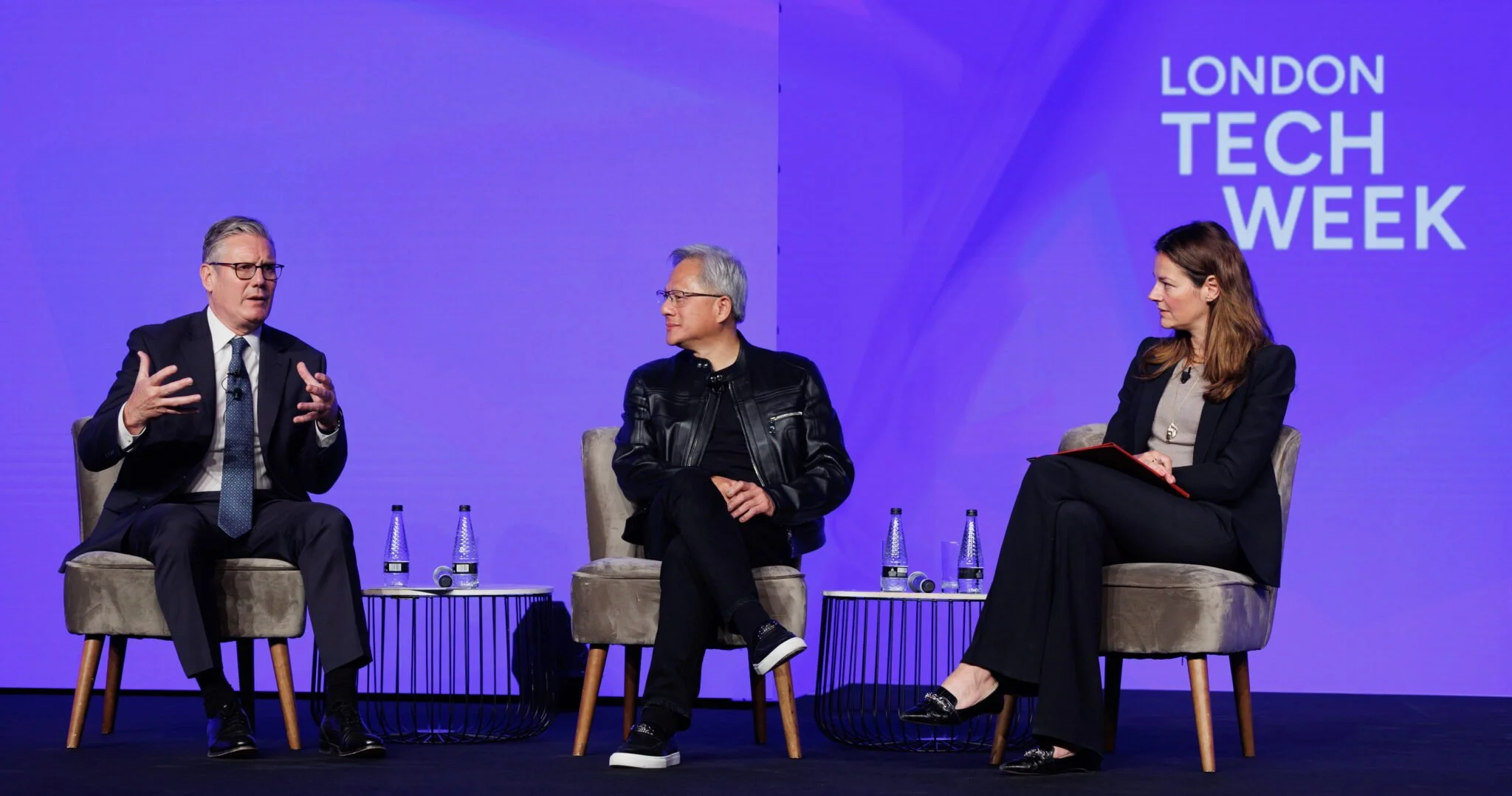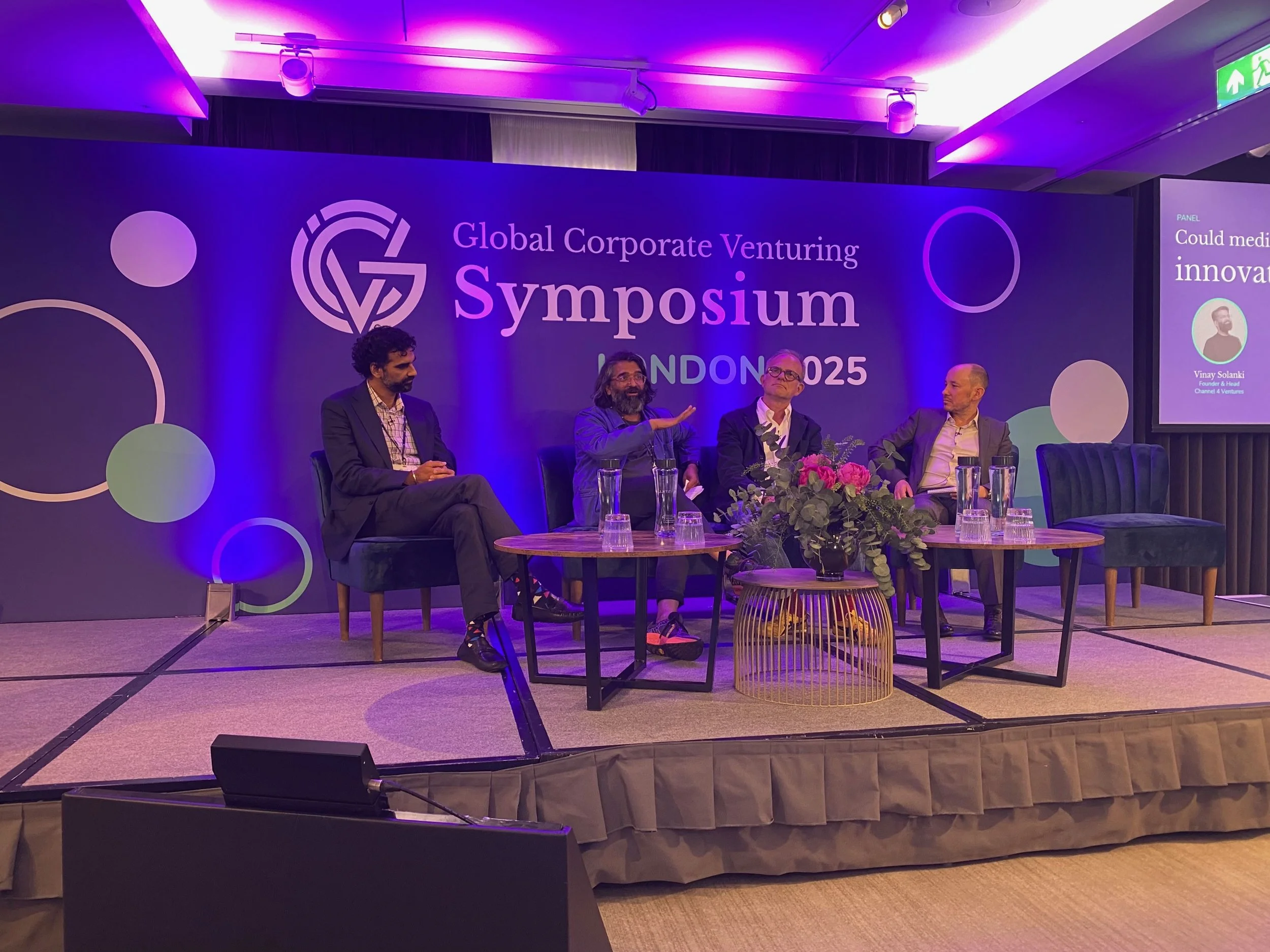How the UK Can Turn Policy into Private Investment
NVIDIA CEO Jensen Huang and UK PM Keir Starmer
The UK is entering what many describe as a “Goldilocks moment” for innovation, an inflexion point where policy ambition, private capital, and ecosystem readiness converge. For family offices and corporate venture capital (CVC) investors, recognising this structural shift and responding with long-term, trust-based investment strategies is both a commercial and reputational imperative.
NVIDIA’s Vote of Confidence
At London Tech Week 2025, NVIDIA CEO Jensen Huang declared: “Because of AI, every industry in the UK will be a tech industry.” He backed this with substance: the launch of a new NVIDIA AI Lab, a national AI developer training initiative, and commitments to AI-native 6G research. However, he also highlighted a strategic vulnerability: the UK is “the largest AI ecosystem in the world without its own infrastructure,” calling for urgent action on sovereign compute investments .
The Mansion House Accord: Institutional Capital in Motion
Simultaneously, the Mansion House Accord is unlocking domestic institutional capital. Seventeen of the UK’s largest DC pension schemes have pledged to allocate 10% of their default funds into private markets by 2030, releasing up to £50 billion, with at least half earmarked for UK-based private assets. This commitment, underpinned by support from Rothschild & Co and the UK Treasury, signals a shift from passive allocation to proactive nation-building.
For family offices, this opens co-investment opportunities with robust governance frameworks, and for CVCs, it validates private market participation as part of a broader industrial strategy.
Public Policy Foundations: Spending Review 2025
The fiscal backdrop adds further depth. The Spending Review 2025 outlines a £18 billion increase in real-terms departmental spending from 2024–25 to 2027–28, and commits £4.5 billion to innovation, AI infrastructure, and digital connectivity.
Crucially, it focuses on skills investment and lifelong learning as enablers of productivity and social mobility. This is more than budget-setting; it’s a strategic attempt to rewire the UK’s economic engine around innovation and human capital.
Academic–Industry Hubs: Catalysts for Growth
The Cambridge × Manchester Innovation Partnership, backed by £6 million in joint funding from Research England and partner universities, exemplifies this national ambition. With participation from Microsoft, Arm and AstraZeneca, the partnership is designed to commercialise research, develop scale-ups, and attract foreign investment into UK IP. These hubs are not only incubators, they’re mechanisms for de-risking early-stage innovation and aligning capital to long-term policy goals.
Unlocking Regulation and Incentivising Innovation
While the capital and policy signals are clear, one critical piece remains under-leveraged: regulatory reform and incentive design for entrepreneurs.
If the UK is to fully realise its growth potential and broaden its tax base, it must modernise outdated rules and actively support innovation.
1. Regulation as Enabler, Not Obstacle
Too often, regulation is framed as a post-facto guardrail. In a growth environment, it must instead be a strategic enabler. Regulatory frameworks should:
Accelerate licensing for new technologies (e.g., AI-enabled health diagnostics, fintech, green energy storage).
Create fast-track regulatory sandboxes for highly regulated sectors (e.g., aerospace, life sciences), modelled after the FCA’s AI sandbox.
Incentivise family office and CVC-backed companies with pre-certification programmes to de-risk product rollouts and meet global standards.
Such measures would help innovative firms scale faster while reinforcing the UK’s reputation as a responsible but responsive regulatory jurisdiction.
2. Smart Tax Reform for Founders and Investors
Generating more income for the state means supporting those who create value. HM Treasury and HMRC should consider the following:
Reform CGT treatment on founder equity, especially for start-ups moving from Seed to Series B. Current punitive tax rates often push founders to exit early or relocate.
Reintroduce a modernised version of Entrepreneurs’ Relief, with caps tied to impact metrics such as job creation, R&D investment or export revenue.
Expand Seed Enterprise Investment Scheme (SEIS) limits and offer additional relief for investments into regions or sectors prioritised in the UK Innovation Strategy.
Such incentives would not only drive more founder-led scale-up activity but also support longer holding periods, increasing value capture and thus tax receipts for the UK.
3. Institutional Alignment: Mobilising Pension and Public Funds
Pension capital, unlocked via the Mansion House Accord, should be matched by regulatory alignment:
Allow DC schemes to offer innovation-linked default funds with proper oversight and diversified governance.
Streamline reporting requirements for private-market investment vehicles, encouraging pension funds to increase allocations to tech, climate, and infrastructure sectors.
Incentivise blended finance models where public funds (e.g., British Patient Capital) de-risk early-stage innovation for private follow-on capital.
Why This Matters to Family Offices and CVCs
The reputational payoff from strategic alignment is clear. Family offices that invest not only capital but capability, by helping shape governance, standards, and policy dialogue, will be perceived as nation-building partners.
CVCs, particularly those active in regulated or critical sectors, can build credibility by showcasing how their investments contribute to UK sovereign goals.
At next week’s GCV Symposium in London, corporate venture leaders will discuss exactly these themes. But to succeed, this must go beyond discussion. Family offices and CVCs should co-develop position papers with academic partners, contribute to regulatory consultations, and take visible positions in public‑private investment and innovation alliances.
We need to break down barriers and move at pace if we are to unlock growth and deliver for everyone and not the few, which is the current perception.





